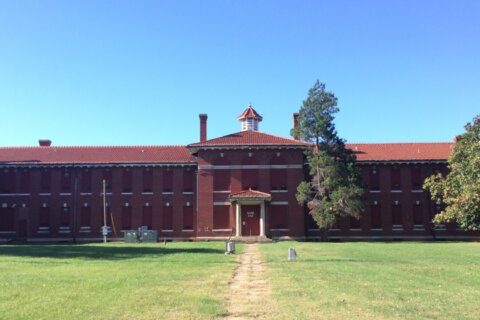The National Park Service has approved DC Water’s proposal to move forward with construction of the Potomac River Tunnel project following an environmental assessment, the agency announced Tuesday.
The Potomac River Tunnel project — part of DCW’s Clean Rivers Project — is estimated to reduce combined sewer overflow volume into the Potomac River by 93%, according to a news release.
Combined sewers are designed to collect rainwater runoff, domestic sewage and industrial wastewater in the same pipe and transport it to a treatment plant. During severe weather, like heavy rainfall or snowmelt, those systems can get overwhelmed and the overflow ends up in nearby streams or rivers.
It’s not just rainwater that ends up in the overflow — there can also be untreated human and industrial waste, toxic materials and debris, according to the Environmental Protection Agency.
The Potomac River Tunnel project aims to combat that.
In addition to reduced overflow by percentage, the project is estimated to reduce the frequency of overflows from approximately 74 to four in a year of average rainfall.
“The project includes construction of diversion facilities and other supporting infrastructure to intercept (Combined Sewer Overflows) from the existing combined sewer system and divert them to the tunnel when existing sewer system capacity is exceeded during storms. Once diverted to the tunnel, excess flows will be carried by gravity to DC Water’s Blue Plains Advanced Wastewater Treatment Plant,” the National Park Service said in a release.
“We have seen the Anacostia River Tunnel, with its tremendous performance, bring a resurgence to that river and its banks,” said DC Water CEO and General Manager David L. Gadis. “We know that the projects we have planned for the Potomac will dramatically improve the health of the river and the quality of life for those who enjoy it. Cleaner rivers invite more recreation and entertainment as well as economic vitality.”
The project will take place primarily on National Park Service land in Northwest D.C. The environmental assessment conducted by NPS found there would be no significant impact on the surrounding area.
“Clean water is vital to plants, animals, parks, and people who live, work and play nearby,” acting NPS National Capital Area Director Lisa Mendelson-Ielmini said. “After seeing the remarkable early success of the tunnel on the Anacostia River, it’s exciting for us in the National Park Service to think about the possibilities for the Potomac.”








